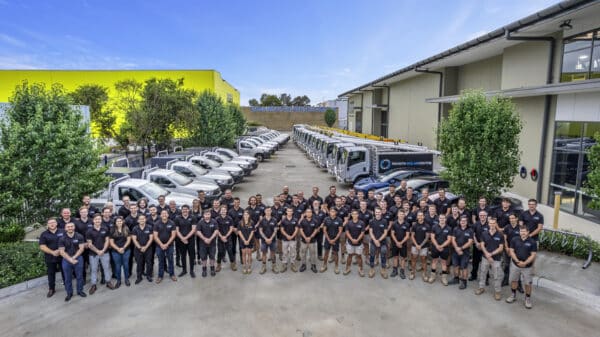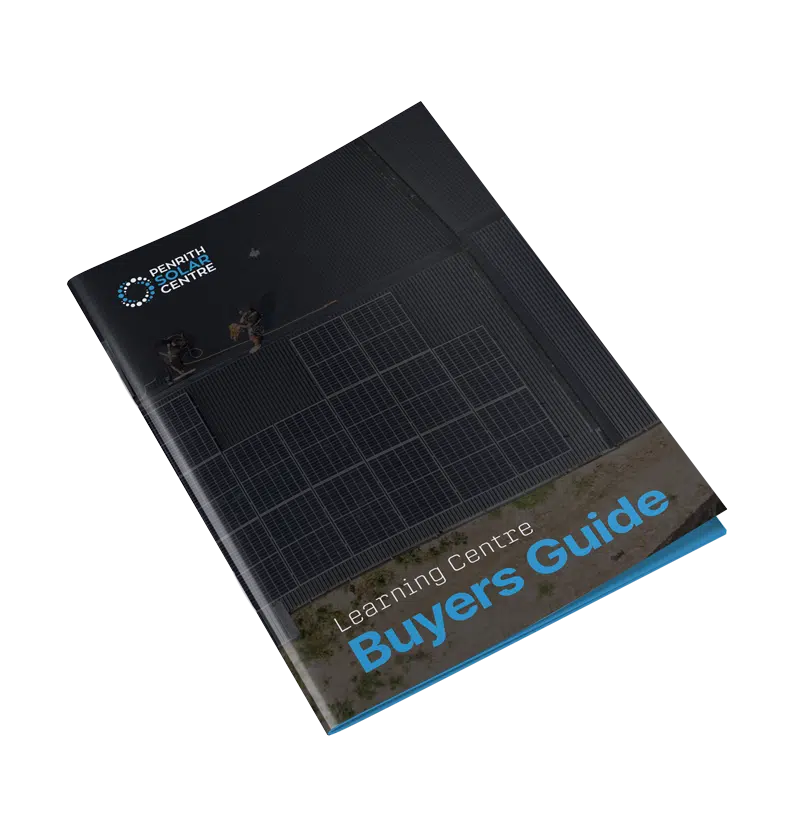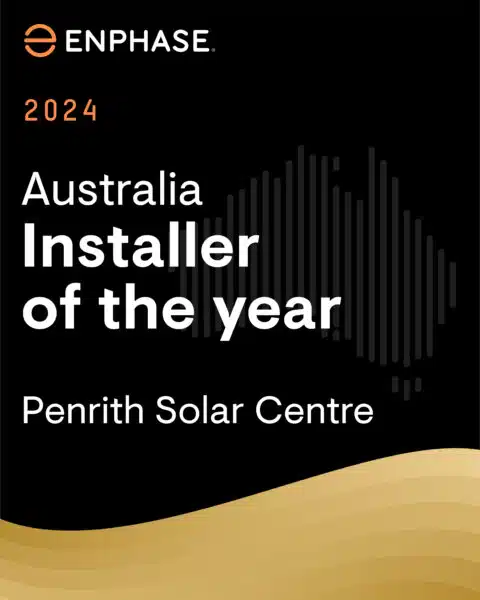
Managing energy costs for your business can be overwhelming, especially with things like peak hours and various fines and charges that go along with them.
If your business is daytime-only (like Penrith Solar Centre), your hours are somewhere between 6:00 AM to 6:00 PM. What are you running during those hours? Everything, right?
When you invest in a solar system that includes energy usage monitoring, you have a lot more independence from your energy bills. You’ll be able to make choices about when you use energy.
At Penrith Solar Centre, we specialise in helping businesses with commercial energy usage monitoring, which is referred to in the solar industry as consumption monitoring. This powerful tool can significantly reduce your energy expenses and increase your energy efficiency.
In this article, you will learn:
- What is Commercial Consumption Monitoring for Solar?
- How is Your Business Using Energy?
- Commercial Solar and Solar Batteries
By the end of this article, you’ll understand why we feel this topic is a key consideration as you investigate solar solutions.
What is Commercial Consumption Monitoring for Solar?
Consumption monitoring is just a fancy phrase for keeping track of your energy usage on an app. The app will monitor your energy usage (consumption) as it travels from the solar on the roof to your business and the grid.
In the commercial solar space, consumption monitoring is 100% necessary. You wouldn’t buy a car without a speedometer, right? Or a security camera without a monitor? This is the same thing. Consumption monitoring is essentially a GPS for your solar, all in an easy-to-use app.
Honestly, it’s so important that we feel it should be compulsory to include it with every solar installation. It’s a powerful tool.
With a little bit of critical thinking when you’re looking at your electricity bill, you should be able to figure out how much you’re spending during peak hours.
It could save you a ton of money. You should be able to learn what your business uses and maybe even do away with some of the stuff that doesn’t need to be on.
For example: you’ve got a few coffee urns in the meals room. There could be two coffee urns on all day long, and they could be using 3kWh each in total.
Do they both need to be on? Consumption monitoring tells you how much energy you’re using at a given time. It can show you that you’re spending 6kWh when you might only need to spend 3kWh.
And just like that, you’ve saved yourself 10 to 15kWh per day of energy because that second coffee urn just sits there, heating, heating, heating, heating, making sure there’s hot water for Karen when she wants to have a coffee.
The reality is you don’t need to have them both on, just one. You figured that out by paying close attention to your energy needs. Consumption monitoring will teach you that and help you become more aware of the energy that you’re using.
If you’re interested in learning more about consumption monitoring in general and how you can use it to invest in solar components, you might want to check out the following article titled, What is Consumption Monitoring?
How is Your Business Using Energy?
You know that your business’s power bills are not like the power bills you get at home. You are charged every 15 minutes. That’s live pricing every 15 minutes. There are about 15 different lines on a commercial power bill to break down and read.
If you’ve got a $10,000 power bill, what you’ll find is only about $3,500 of it is your actual energy usage. Another $3,500 is grid fees, and there’s another $3,000 worth of fines on that bill.
Your energy retailer will fine you, or call it a charge, but we’ll call it a fine. They’ll fine you for your peak energy usage at any one given time for the electricity you’ll export back to the grid.
If you were to use 20kWh at peak hours, your fine would be quite low. But if you spike to 180kWh, they will fine you for that 180kWh, and that will cover your whole bill. They’ll take your maximum usage at any one time, multiply it by, say, $0.13 per kilowatt (yes, we meant kW because it’s a fine of peak power demand not usage over time) or whatever the number is — it could be $0.08, depending on the retailer — and that will be a blanket fine over your whole bill.
They call it a peak demand charge. If you’ve exceeded what they feel you should use, they apply that charge, which is crazy.
If you’re interested in learning a bit more about how your solar system can export energy back to the grid, you might want to check out the following article titled, How Does Solar Net Metering Work?
How Can You Use Solar Batteries in Your Business?
We’ve now gotten to the meat of the issue: solar batteries. They give you the ability to control your energy for maximum savings.
It’s about using your energy better. Instead of using ten appliances at once, you might use three in the morning, three at midday, and three in the afternoon. Your peak hour charges would be far less, your fine would be far less, and you instantly save thousands.
One of the primary uses of commercial battery storage is to provide power during nighttime when energy demand is low. But this is just one of many uses. Other important applications include:
Load Shifting: Load shifting is when you shift the energy usage to more optimal (cheaper) times during the day to reduce your energy bill. What are you using now that could be done later when it’s cheaper? Battery storage systems enable businesses to store excess energy during off-peak times and use it during peak periods, reducing electricity costs and contributing to grid stability.
Peak Shaving: Peak shaving is when you use a different energy source during peak hours. By using stored energy from your solar battery during these hours, businesses can significantly cut down the hefty charges on their energy bills.
Anytime our building uses more than 100kW at once, it could come from the solar on the roof for free and the rest out of the battery. If you cut the grid off from your building, you won’t get fined for using that energy which is so expensive in the afternoon.
Sell It Back to the Grid: Advanced users can also choose to discharge their stored energy back into the grid for a price. Using solar batteries this way can generate some nice revenue for you beyond just energy bill savings.
Electric Vehicles: The last thing we need to mention is charging electric vehicles. We hope you don’t think that this last bit about electric vehicles doesn’t apply to you.
We’re in an energy crisis. Globally, we’re moving away from fossil fuels to prevent apocalyptic weather events.
The future will literally be powered by electricity. Your fleet of vehicles, even if it’s just a service van, will be electric.
Charging your electric vehicles at night might seem like a cost-effective option, but it’s more economical to charge them during the day using solar power.
When you charge during daylight hours, the energy comes directly from your solar panels, which costs nothing beyond the initial investment in the solar system.
If you don’t have a fleet of vehicles, consider installing a few chargers for your staff. Everyone will be driving them soon. Charging their electric vehicles for free might be a nice performance incentive to offer.
If you’re interested in learning a bit more about commercial solar installations, especially when it comes to cost, you might want to check out the following article titled, Commercial Solar Energy in Sydney: Why Should I Consider It?
Consumption Monitoring for Your Business: You Conduit!
Now you understand the importance of consumption monitoring and how it’s used to inform the decisions you make about energy. It has the potential to save your business a lot of money. All you need to do is use it.
By using consumption monitoring, you can reduce peak demand charges, optimise energy use, and even generate additional revenue by selling energy to the grid.
At Penrith Solar Centre, we’re here to help you manage your energy effectively. By educating folks about solar, we inch closer to the goal as we work together to reach Net Zero by 2050.

If you’re interested in learning a bit more about commercial solar, you might want to check out the following article titled, Commercial Solar Sydney: Leasing vs. Owning.










